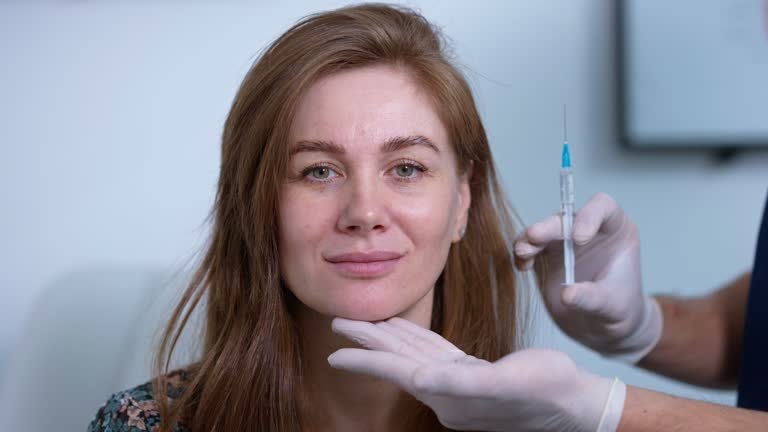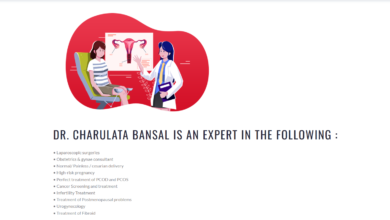
Chin Reduction in Abu Dhabi is a sought-after aesthetic procedure for those looking to refine their facial profile and achieve a more balanced, youthful appearance. In Abu Dhabi, several techniques are available to address a full or prominent chin, with each method offering different benefits and results. Whether you are considering surgical or non-surgical options, it’s important to understand the various chin reduction techniques to make an informed decision.
This article explores and compares some of the most popular chin reduction techniques in Abu Dhabi, helping you choose the one that best fits your needs.
1. Liposuction for Chin Reduction
Liposuction is one of the most common methods used to reduce excess fat beneath the chin, also known as a “double chin.” It is an ideal solution for individuals with localized fat accumulation in the chin area that cannot be easily reduced with diet or exercise.
How It Works:
The procedure involves making a small incision under the chin, through which a thin tube (cannula) is inserted to suction out fat. This can be done using either traditional liposuction or advanced techniques such as laser-assisted liposuction.

Benefits:
- Provides dramatic and long-lasting results.
- Suitable for people with a double chin caused by excess fat.
- Minimal downtime, especially with laser liposuction.
Considerations:
- Requires anesthesia, so the procedure is performed in a clinic setting.
- Some swelling and bruising are common post-treatment.
- Results take a few weeks to fully show as swelling subsides.
2. Chin Liposculpture (SmartLipo)
Chin liposculpture, also known as SmartLipo, is an advanced form of liposuction that uses laser technology to target fat cells in the chin area. The laser melts the fat before it is suctioned out, which also stimulates collagen production for smoother skin.
How It Works:
A small laser fiber is inserted through a tiny incision, and the laser energy liquefies the fat, which is then gently removed. This technique is more precise than traditional liposuction, allowing for better contouring of the chin and neck area.
Benefits:
- Less invasive compared to traditional liposuction.
- Stimulates skin tightening through collagen production.
- Shorter recovery time with minimal discomfort.
Considerations:
- Requires a consultation to determine if you are a good candidate.
- May require a few days for swelling and bruising to subside.
3. Non-Surgical Chin Lipolysis (Kybella)
For those looking for a non-invasive chin reduction option, Kybella is a popular injectable treatment that uses deoxycholic acid to break down and absorb fat cells in the chin area. This treatment is ideal for patients who have moderate fat deposits but do not want to undergo surgery.
How It Works:
Kybella is injected directly into the fat beneath the chin, where the deoxycholic acid works to destroy the fat cells. Over the following weeks, the body gradually metabolizes and eliminates the fat.
Benefits:
- Non-surgical with minimal downtime.
- No need for anesthesia or incisions.
- Results are natural-looking and permanent once the fat cells are destroyed.
Considerations:
- Multiple sessions may be required for optimal results.
- Swelling and redness at the injection site are common immediately after treatment.
- Results take a few weeks to fully appear.
4. Chin Reduction Surgery (Mentoplasty)
Chin reduction surgery or mentoplasty is a more invasive option for those looking to significantly alter the shape of their chin. This procedure is best suited for individuals with a prominent or overdeveloped chin, whether caused by excess bone or soft tissue.
How It Works:
During chin reduction surgery, the surgeon makes an incision inside the mouth or beneath the chin, depending on the technique. The procedure involves removing or reshaping the bone and soft tissue to achieve a more proportionate chin.
Benefits:
- Offers permanent results and dramatic improvement in chin profile.
- Can address both bone and soft tissue for a more balanced appearance.
- Suitable for individuals with a very prominent chin.
Considerations:
- Longer recovery time compared to non-invasive methods.
- Requires anesthesia and is performed in an operating room.
- Potential risks include infection, scarring, and changes in sensation.
5. Ultrasound and Radiofrequency Treatments (Ultherapy)
For individuals seeking a non-invasive way to lift and tighten the skin around the chin, Ultherapy is an advanced ultrasound treatment that stimulates collagen production. While it does not directly reduce fat, it can improve the contour of the chin area by tightening loose skin, especially for those with mild sagging.
How It Works:
Ultherapy uses focused ultrasound energy to stimulate the deeper layers of the skin, encouraging collagen production and lifting the chin and neck area. The treatment also improves skin elasticity, which helps create a more defined jawline.
Benefits:
- Non-invasive with no recovery time.
- Ideal for patients with mild skin laxity and early signs of aging.
- Results improve over several months as collagen production increases.
Considerations:
- Not suitable for those with significant fat in the chin area.
- Results may take several months to become noticeable.
- Multiple sessions may be required for optimal results.
6. CoolSculpting for Chin Fat
CoolSculpting is a non-invasive fat-reduction treatment that freezes and eliminates fat cells through a process called cryolipolysis. This technique is ideal for individuals with small to moderate amounts of fat under the chin.
How It Works:
The CoolSculpting device is applied to the chin area, where it freezes fat cells, which are then naturally eliminated by the body over time. This method specifically targets fat without affecting surrounding tissue, resulting in a more sculpted chin.
Benefits:
- Non-invasive and requires no downtime.
- Results are gradual and natural-looking.
- Suitable for patients with stubborn fat in the chin area.
Considerations:
- Several sessions may be needed for optimal results.
- Results become noticeable after a few weeks to months.
- Ideal for patients who have fat but not excess skin in the chin area.
Conclusion
Choosing the right chin reduction technique in Abu Dhabi depends on several factors, including the amount of fat, the desired result, and whether or not you are looking for a surgical solution. Non-invasive options such as Kybella, CoolSculpting, and Ultherapy are excellent for those who want subtle improvements without undergoing surgery. For more dramatic and permanent results, liposuction or chin reduction surgery may be better options.
Consulting with an experienced professional will help you determine which technique is best for your individual needs, helping you achieve a more defined and proportionate chin.
FAQs
Q1: How long does it take to see results from chin reduction treatments?
Results vary by treatment. For non-surgical options like Kybella or CoolSculpting, results may take a few weeks to a few months to become fully visible. Surgical methods typically show immediate results, though some swelling may occur.
Q2: Is there any downtime after chin reduction treatments?
Non-invasive treatments like Kybella, CoolSculpting, and Ultherapy have minimal downtime, with most patients returning to daily activities shortly after. Surgical chin reduction typically requires a few days to a week of recovery.
Q3: How many sessions are required for non-surgical treatments?
The number of sessions depends on the method and the amount of fat in the chin area. For example, Kybella may require multiple injections, while CoolSculpting often requires one to two sessions.
Q4: Are the results of non-surgical chin reduction permanent?
Yes, the results from non-surgical treatments like Kybella and CoolSculpting are permanent once the fat cells are destroyed. However, maintaining a healthy lifestyle is essential to avoid the regrowth of fat.
Q5: Can chin reduction treatments help with loose skin?
While some treatments like Ultherapy can tighten and lift loose skin, options like liposuction and surgery may be better suited for individuals with significant skin laxity.
